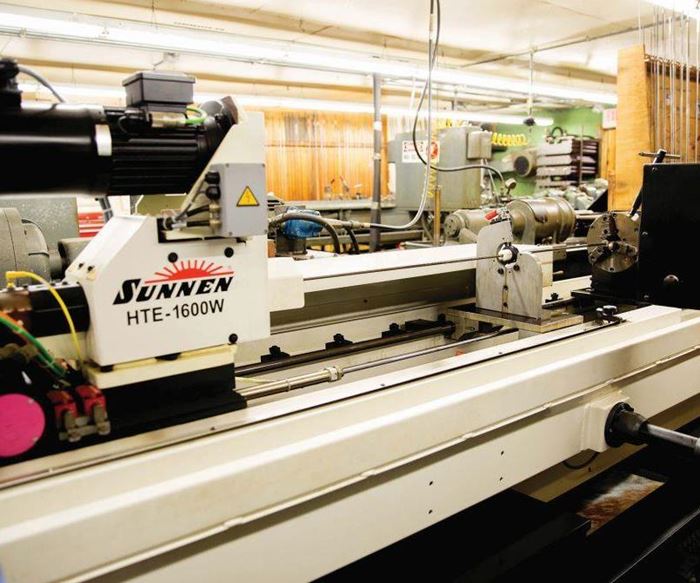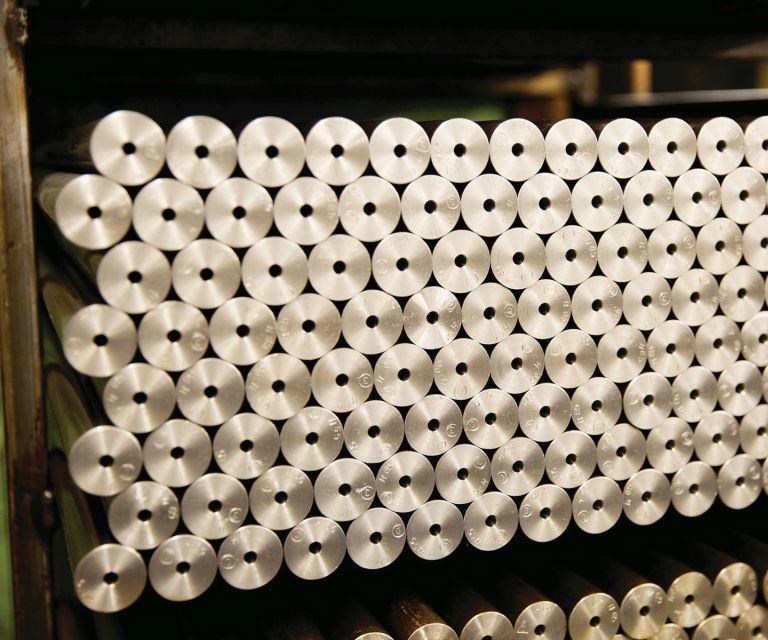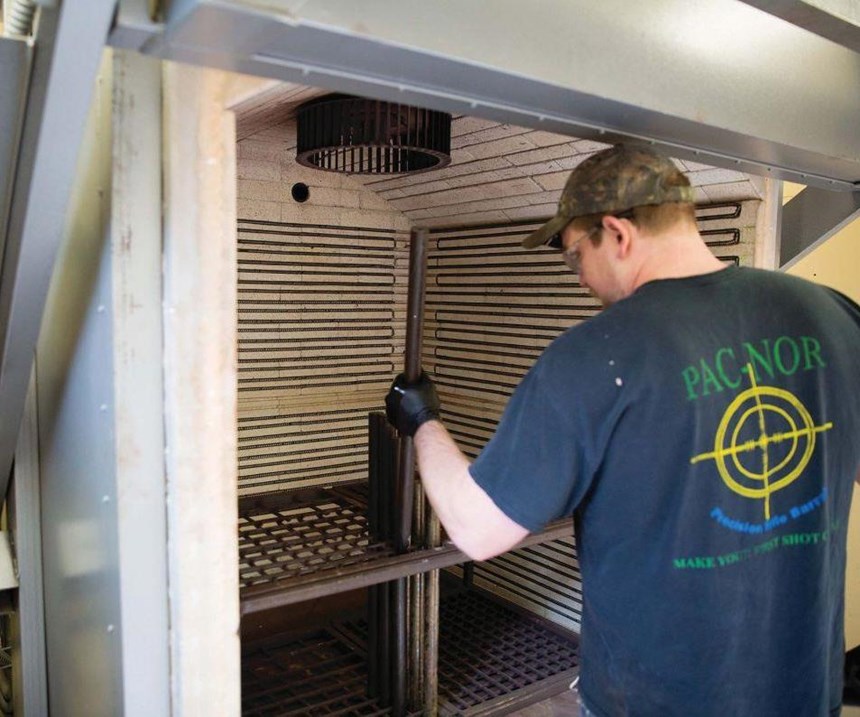Honing System Eliminates a Gun Barrel Lapping Operation
Pac-Nor Barreling Inc.'s manual lapping of gun barrels was tedious and time-consuming. Sunnen's HTE honing machine eliminated manual pre-lapping and improved barrel consistency.
Share





Takumi USA
Featured Content
View More



Hwacheon Machinery America, Inc.
Featured Content
View More
Conventional manufacturing of precision rifle barrels has typically involved manual hand-lapping of a barrel’s bore surface twice, before and after the rifling profile is created. Although a bright, hand-lapped bore is considered one of the hallmarks of a precision rifle barrel, there are inherent variations from barrel to barrel due to the manual nature of the often tedious and monotonous lapping process.
More than a year ago, Pac-Nor Barreling Inc., a custom manufacturer catering to bolt-action rifle shooters, addressed this issue by purchasing a newly developed Sunnen HTE honing machine. This machine has all but eliminated Pac-Nor’s pre-rifling lapping operation, which is the more difficult and time-consuming of the two lapping operations. Pac-Nor is also producing as many custom barrels as ever, but with a slightly smaller staff. “Our objectives with the honing machine were to build a better product with less labor, and it has exceeded my expectations,” says Casey Dichter, production manager. “The hone produces a consistency in bore diameter that is head and shoulders above lapping, within two to three millionths of an inch end-to-end when it’s really dialed in,” he says. “This, in turn, improves the consistency of the rifling process by minimizing variation in the depth of the grooves. We still finish-lap after rifling, but that process is now easier because we just polish off the fine crosshatch finish that might be left after honing and rifling.”
Pac-Nor’s shop runs two shifts per day. A day shift of 10 people produces 30 to 40 custom barrels of different calibers in 416R stainless or chrome-molybdenum steel. A night shift of three people produces approximately 50 AR-15 barrels per day for a rifle OEM.
The barrel manufacturing process begins with cutting and facing premium barstock, followed by gundrilling. After a subsequent reaming operation, the barrels are gaged for size. Depending on the condition of the reamer, 0.0004 to 0.0007 inch of material is left in the bore, which must be manually lapped or honed away to final size for rifling. “Everyone who works here has done hand lapping,” Mr. Dichter explains. “It is an unpleasant job, (particularly if the reamer is starting to get dull) that might take 10 to 45 minutes depending on the caliber of the barrel. We tried to shorten this time, but when chatter marks get ‘ironed’ into the surface by the rifling button, the finish lap is even longer and more difficult. With lapping, too, there is potential for variation simply because it is a manual process. It can also be a production limiter, and in our region we have a very small labor force to draw upon when we want to grow.”
The company had explored honing in the 1990s, but revisited the idea when Sunnen introduced its HTE honing machine in 2014. The HTE is a horizontal machine that can hone small-bore rifle barrels with diameters ranging from 0.150 to 0.790 inch and lengths to 60 inches. Designed specifically for long, small bores, the machine features a sensitive drive and tool-feed system that is said to provide protection against honing tool overload and breakage. Tool-specific force limits and run settings are stored in the machine’s touchscreen PC control, enabling the system to sense tight sections in the bore and automatically correct them.
Sunnen also developed a new long-bore tool (LBT) designed for the small bores of 0.17-caliber rifle barrels. This tool is said to quickly remove reamer marks, waviness, tight spots and other imperfections left by upstream processes. The LBT features metal-bond diamond or cubic boron nitride (CBN) superabrasives for productivity, long life and fast cycle times. Precision-machined from through-hardened tool steel, the LBT can produce bore accuracies of 0.000027 inch for diameter, roundness and taper.
Honing also quickly removes reamer scratches and surface waviness. A typical 600-grit abrasive can produce a 6- to 10-microinch Ra finish in a reamed barrel blank. By producing a consistent bore diameter of ±0.0001 inch or smaller, parallelism, roundness and end-to-end surface finish, honing yields more consistent performance from rifling buttons and cutters, resulting in a constant groove depth. Accurate barrel-bore geometry reduces the distortion of the bullet shape during firing for improved gyroscopic stability in flight.
After honing, the barrel is inspected again before rifling with a pull button. Pac-Nor makes its own Accu-Twist carbide rifling buttons and can provide different rifling styles, including polygonal, per the customer’s choice. A button is attached to a rod and the rod is pulled through the barrel. The company’s hydraulic rifling machine uses a CNC-machined twist bar with a helix angle that matches the twist rate requested by the customer. The final twist rate is confirmed afterward using an electro-optical twist measurement system.
The barrel is then stress-relieved in a tempering furnace, followed by contouring of the outer shape and final, finish-lapping of the bore. “During the finish lap, you can really tell the difference between a bore that was honed before rifling and one that was lapped,” Mr. Dichter says. “You can easily sense any remaining tight or loose spots in the bore, and the diameter uniformity and roundness of the honed bore are superb. The lap also feels different in a honed bore.
“We are currently honing approximately 80 percent of the barrels we make and will do more as we acquire the tools in different calibers. We have learned that the quality of our reaming does not need to be as critical now that we have the honing machine. Although there is a trade-off in cycle time and abrasive cost for additional honing, we are still able to run our reamers two to three times longer than when we lapped alone.”
Related Content
Orthopedic Event Discusses Manufacturing Strategies
At the seminar, representatives from multiple companies discussed strategies for making orthopedic devices accurately and efficiently.
Read MoreQuick-Change Tool Heads Reduce Setup on Swiss-Type Turning Centers
This new quick-change tooling system enables shops to get more production from their Swiss turning centers through reduced tool setup time and matches the performance of a solid tool.
Read More6 Machine Shop Essentials to Stay Competitive
If you want to streamline production and be competitive in the industry, you will need far more than a standard three-axis CNC mill or two-axis CNC lathe and a few measuring tools.
Read MoreBallbar Testing Benefits Low-Volume Manufacturing
Thanks to ballbar testing with a Renishaw QC20-W, the Autodesk Technology Centers now have more confidence in their machine tools.
Read MoreRead Next
Building Out a Foundation for Student Machinists
Autodesk and Haas have teamed up to produce an introductory course for students that covers the basics of CAD, CAM and CNC while providing them with a portfolio part.
Read MoreRegistration Now Open for the Precision Machining Technology Show (PMTS) 2025
The precision machining industry’s premier event returns to Cleveland, OH, April 1-3.
Read More5 Rules of Thumb for Buying CNC Machine Tools
Use these tips to carefully plan your machine tool purchases and to avoid regretting your decision later.
Read More










































.jpg;maxWidth=300;quality=90)








